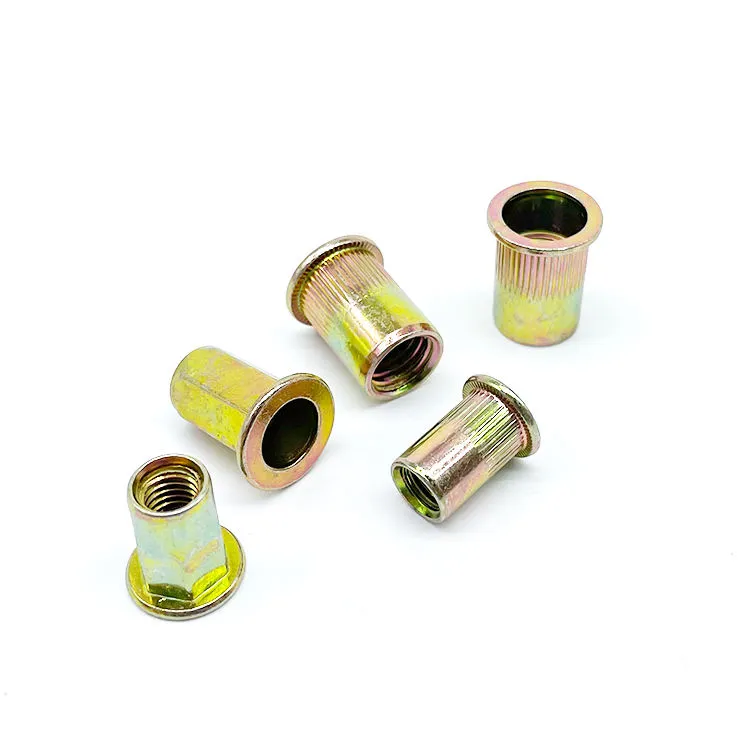

m36 washer
Oct . 02, 2024 12:07 Back to list
m36 washer
The M36 Washer A Crucial Component in Mechanical Engineering
The M36 washer is an essential component used in various engineering applications, particularly in mechanical assemblies, construction, and manufacturing sectors. As a standardized part, it plays a critical role in ensuring the integrity and longevity of fastened joints, maintaining safety and efficiency in mechanical structures.
Understanding the M36 Washer
The term M36 refers to the nominal diameter of the washer, which is 36 millimeters. This geometric size falls under the metric system, and it is commonly used in conjunction with M36 bolts and screws, which likewise measure 36 millimeters in diameter. Washers, such as the M36, serve several functions, including distributing the load of a threaded fastener, preventing damage to the surface being fastened, and providing a smooth surface for fastener operation.
Types and Materials
M36 washers are available in several types and materials, each suited for different applications. The most common types include flat washers, lock washers, and spring washers.
1. Flat Washers These are the most basic type, used primarily to distribute loads. They are effective in reducing the risk of surface damage and are often made from materials like stainless steel, carbon steel, or plastic, depending on the specific needs of the application. 2. Lock Washers Designed to prevent loosening under vibration, lock washers can be either helical or tooth-type. The helical design provides spring-like tension, while toothed lock washers grip the surfaces they are installed between, ensuring the fastener remains secure over time.
m36 washer

3. Spring Washers Similar to lock washers, spring washers provide resistance against loosening due to vibration or movement. They are typically used in applications where there is significant dynamic loading.
The choice of material for M36 washers is equally important. Stainless steel is popular due to its resistance to corrosion, making it ideal for outdoor and marine applications. On the other hand, carbon steel washers may be more suitable for indoor environments where exposure to moisture is limited and cost considerations are significant.
Applications
M36 washers are found in a wide range of applications—from heavy machinery and automotive assembly to construction projects and household appliances. In automotive applications, they help ensure that components like engines and suspensions remain secure, facilitating safety and performance. In construction, they can be seen in bolted connections in structural steel, where they help manage significant loads and stress.
Conclusion
In conclusion, the M36 washer is more than just a simple component; it serves critical functions that enhance the reliability and safety of various mechanical systems. By choosing the right type and material of the washer for specific applications, engineers and technicians can mitigate risks associated with mechanical failure. As industries continue to evolve, the importance of such seemingly small components like the M36 washer is underscored, proving that in engineering, every detail counts. Whether in the design of a new product, the renovation of existing structures, or routine maintenance, the M36 washer remains a steadfast ally in the quest for durability and performance in engineering solutions.
Latest news
-
High-Strength Hot-Dip Galvanized Bolts-Hebei Longze|Corrosion Resistance&High Strength
NewsJul.30,2025
-
Hot Dip Galvanized Bolts-Hebei Longze|Corrosion Resistance&High Strength
NewsJul.30,2025
-
Hot Dip Galvanized Bolts - Hebei Longze | Corrosion Resistance, High Strength
NewsJul.30,2025
-
High-Strength Hot Dip Galvanized Bolts-Hebei Longze|Corrosion Resistance, Grade 8.8
NewsJul.30,2025
-
Hot Dip Galvanized Bolts-Hebei Longze|Corrosion Resistance,High Strength
NewsJul.29,2025
-
High-Strength Hot Dip Galvanized Bolts - Hebei Longze Metal Products Manufacturing Co., Ltd.|corrosion resistance&high strength
NewsJul.29,2025

